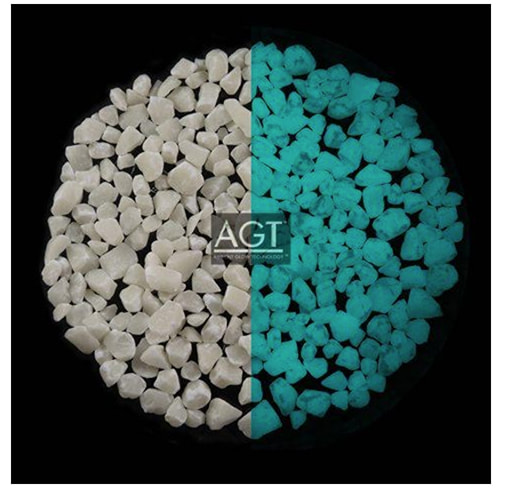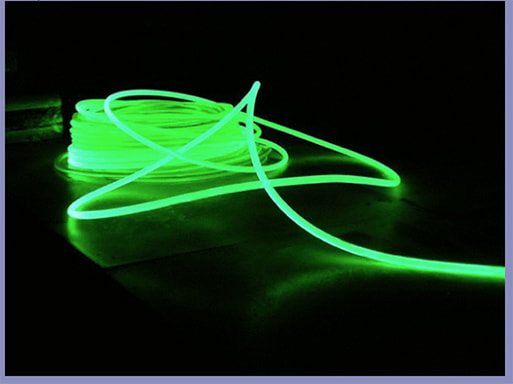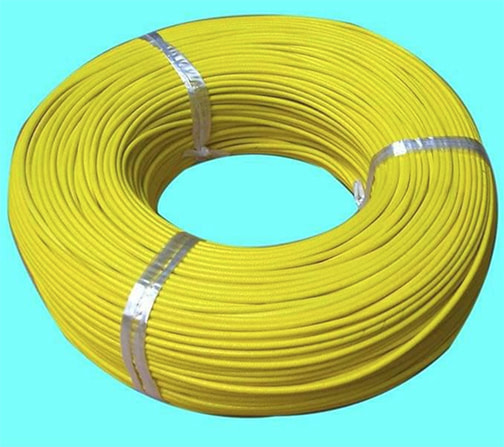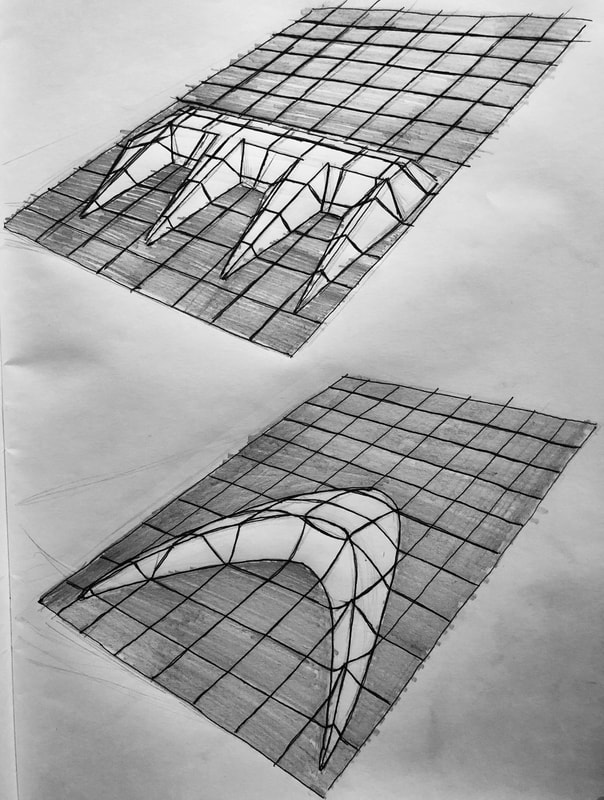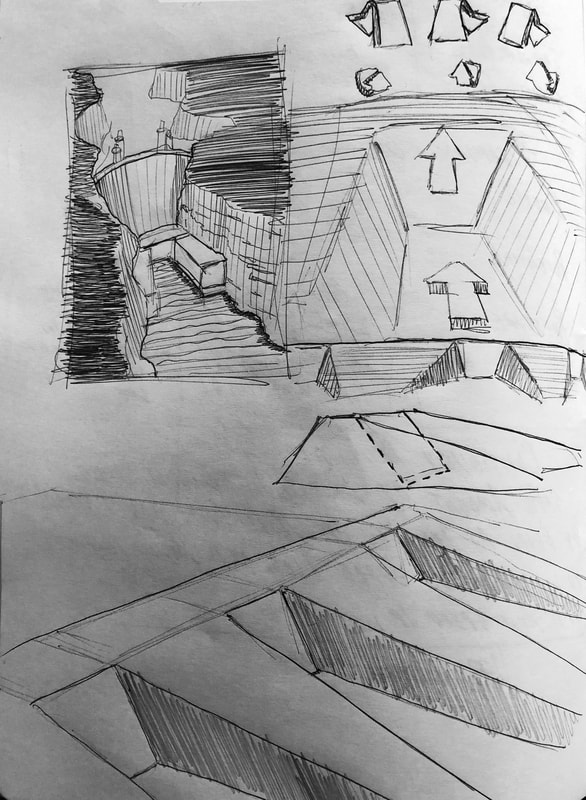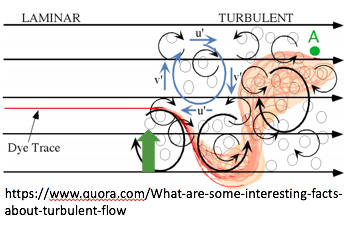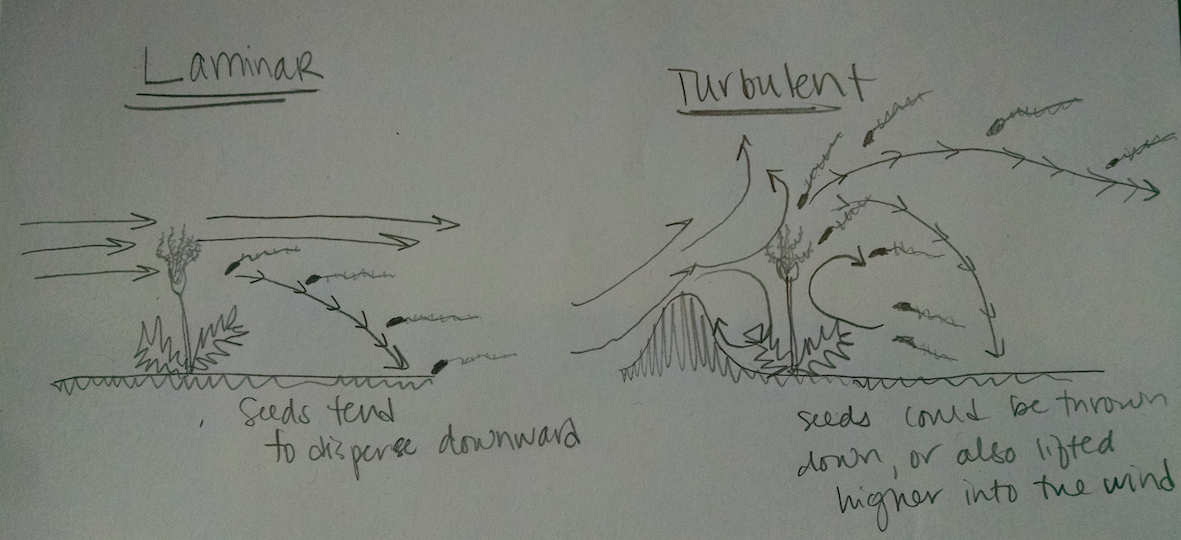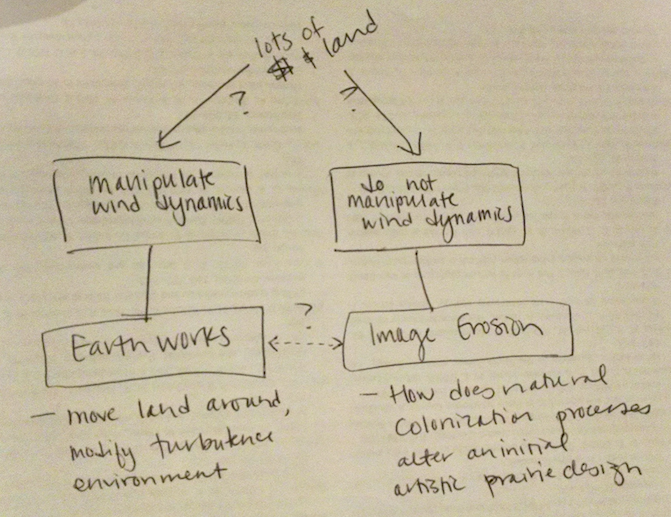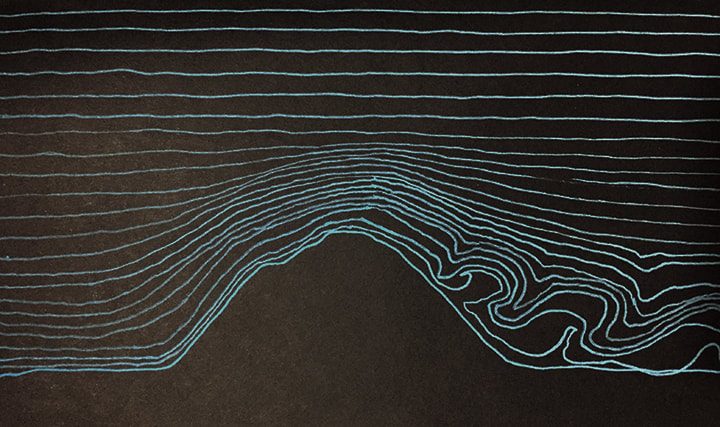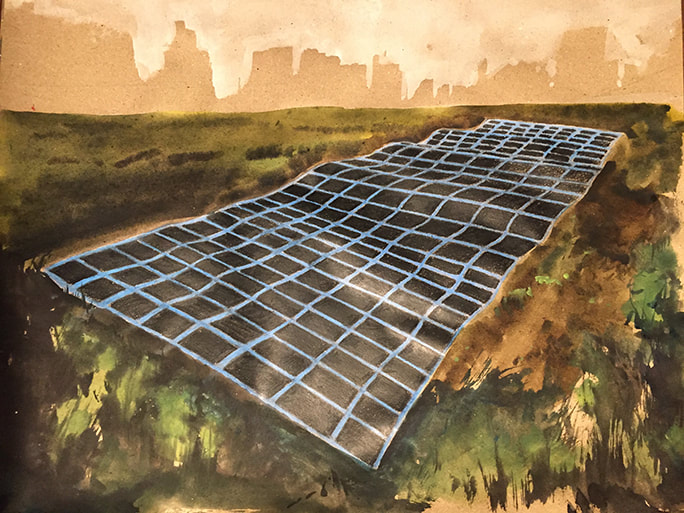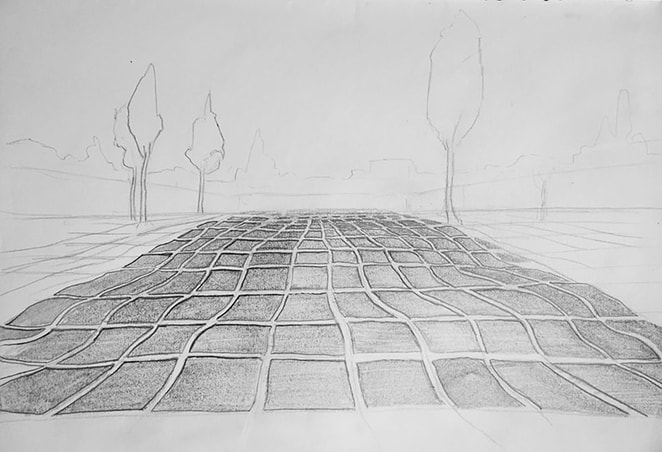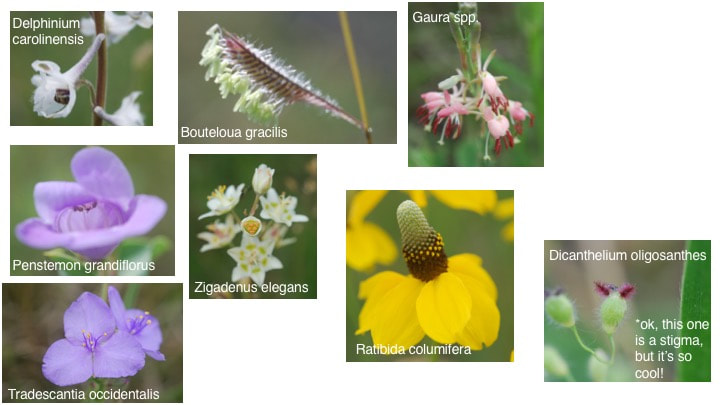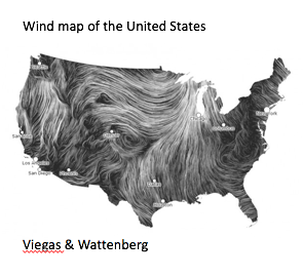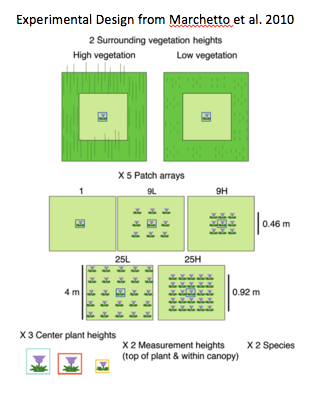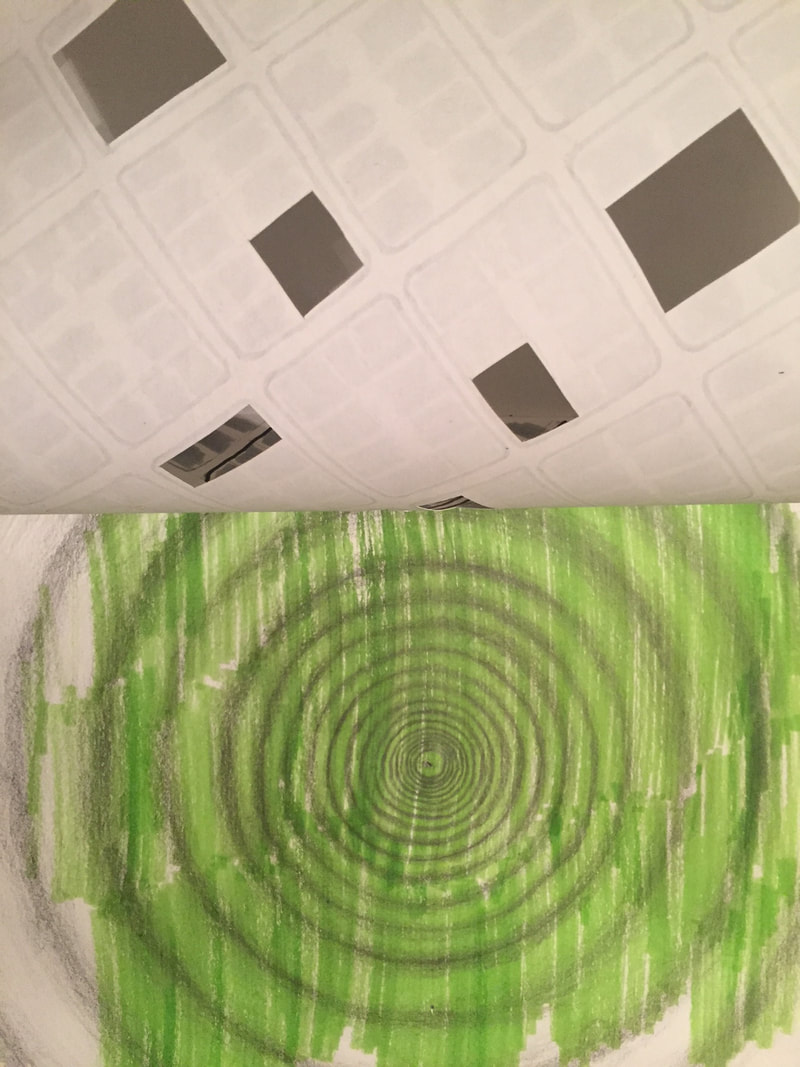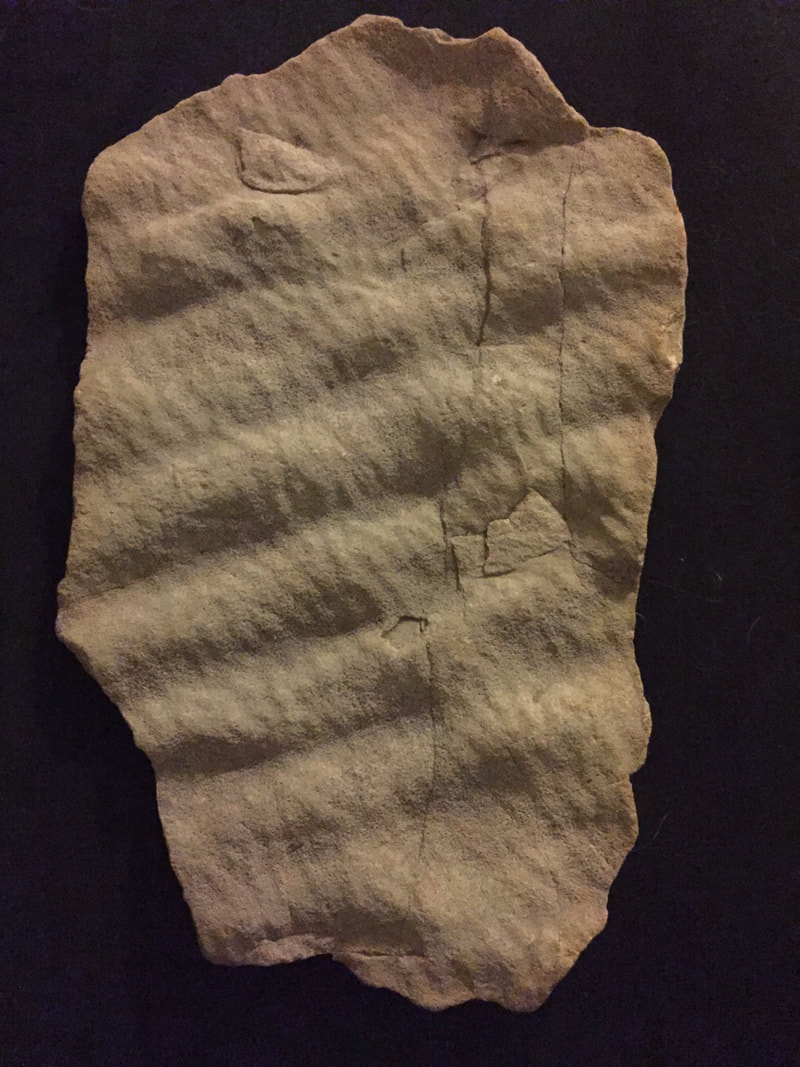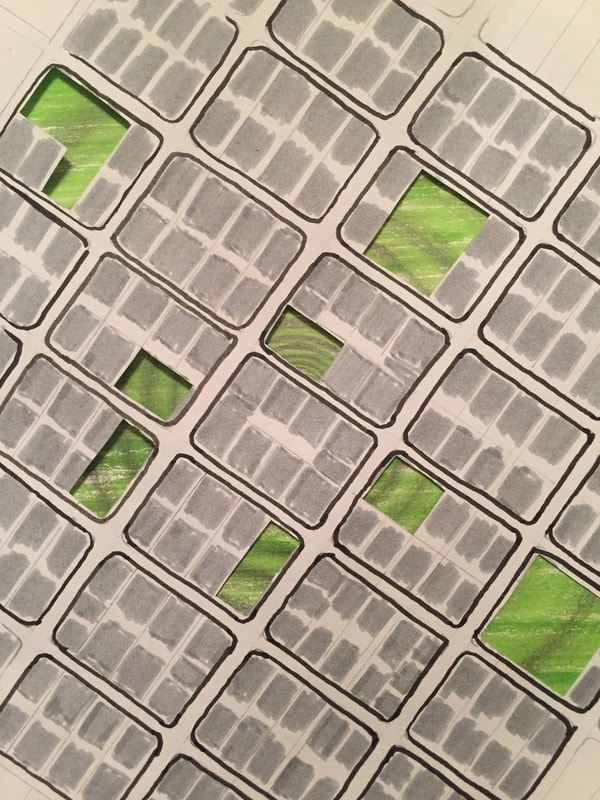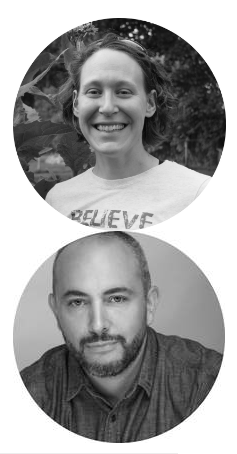|
Lauren I want to start by thanking the folks at SciArt for choosing me to be in the residency program. I have thoroughly enjoyed the whole thing. Meeting Ken and talking to him every week gave me a really neat opportunity to think WAY outside the box. So I am really happy for that. Also, depending on how things go, this program might change the trajectory of my career! Which is both exciting and scary! I’ve been brainstorming a lot about how to find a job in St Louis, and I think this project is multi- faceted and cool enough that I could figure out a way to take this work and start out on my own and do science independently. There is a real lack of scientists that work across the art boundary, but I think this connection provides a way for people to connect more deeply with science. So I think it would be possible to find ways to get local schools involved in the creation and monitoring of this project, especially because it is so place-based. The prairie restorations could be used as a petridish for students to learn the scientific method in a real-life way, and also explore their artistic interests. I don’t think I would have even considered going out on my own if it hadn’t been for working with Ken and seeing the interest in SciArt. And also learning more about the SciArt center - a very neat organization. Regardless of what I do with my life, Ken and I fully intend to continue working on our project. We still have a bit more thinking to do about the exact art and science we want to do, but we are getting a lot closer to having a concrete idea that is sell-able to funders. We both have some catching up to do on our own work, but plan to resume our conversations about this project in February. One thing I will take away from this collaboration, is that it’s worthwhile to think more deeply about why you are doing a specific project. In the science world, ideas come fairly cheaply, so what I have enjoyed about working with Ken is that I have learned it is totally ok to want to emotionally connect to the work you are doing. Whether that be through the work itself or through the people you are collaborating with, or both, the work is way more enjoyable if you feel really strongly about it. And one thing I wouldn’t have explicitly realized unless being asked to write about the collaboration process ever week, is that I really enjoyed spending some dedicated time at the beginning of our collaboration getting to know each other. I think I will insist on this for most of my science-specific (and other) collaborations in the future. It allowed me to trust Ken more, and feel more comfortable being myself. The SciArt bridge residency has been very rewarding for me, and I am so grateful I had the opportunity! Blogged while listening to Green Day (this was my graduation song, it felt appropriate). Ken
With the residency coming to a close, I have taken some time to look back on the experience. Beginning this collaboration with Lauren, I had no idea what to expect, which direction it would go, what kind of project (if any) might result? I think that was also very helpful. Starting with a blank slate of sorts - no expectations or agenda, allowed the natural flow of two people becoming friends and sharing ideas. I feel extremely fortunate to have been paired with Lauren. When considering a science art collaboration there is a challenge of integration. Looking back on the nature of our collaboration, I see the first couple interactions as being the most influential in this regard. We allowed ourselves to step back from our own investigations and get to know each other. For me, letting go of my primary work freed me to explore other ideas and interests. After this point, we could start from step zero - find out other common interests (for us: chaos theory, site specificity in the urban context, public education/ engagement, mediation, weather and plants as material, etc.) Building from these concepts we were able to explore and grow half formed ideas and through repeated conversations clarify a direction. (This was an example of our shared confidence and intuition of our partnership, that we would figure out a subject/ project despite the uncertainty of its beginning.) In this process and now proposed project, I feel we achieved an equal balance of science and art. For me this was of essential importance- to make sure the art was not just a visualization of scientific information or a decoration for a research site. The art needed to be embedded in the science and the science needed to be embedded in the art - you can’t take them apart and still have either function independently. Scientific research provides new insight to the world. Art provides new ways of thinking. I think practitioners of both fields have always been drawn to the other as it provides new territories to explore. Growth and forward movement are shared traits. Beyond forming a great friendship with Lauren I feel lucky to have had this experience. She exposed me to so much in terms of scientific methodology, question posing, focus and clarity of research. This all accompanies what she shared about mapping, plant migration, seed dispersal and the generational time arc involved. These concepts were illuminating to say the least. I am grateful to have learned about processes that unfold all around us continually yet normally escape our notice- an opportunity for discovery. I think this was a hallmark of our working together, a sharing of inspiration, working process, and a sounding board for ideas. Lastly, I think our collaboration was successful for the fact that it will continue. Lauren and I are in process on finishing our proposal and beginning the search for funding. Our project of creating an earthwork to affect turbulence and seed dispersal to naturally restock grass lands will take place in abandoned urban lots. It will provide the local community with a view into on- going scientific research and the continual presence of an artwork in an underserved neighborhood. This is the capstone for me - the realization of a project I never would have dreamed of without this collaboration with Lauren.
0 Comments
Lauren I have really enjoyed looking at Ken’s experimental grid renditions. They are a really neat way to visualize the spatial design of the potential experiments we could create. This week, I spent some time adding my ideas on top of Ken’s grid, to explain how I’m thinking about these experiments. So first, my favorite of the grid designs so far seems to be the most complicated to build - but I think this one will create the most turbulence. See my blog from week 10 if you need a refresher on turbulence. I am envisioning that the plots within the grid would be planted in a specific pattern. With some plots (the red and blue plots) as “source” plots that contain species we want to track as they move around on the landscape. All the surrounding gray plots would have a different subset of species so if you saw species from either the red or blue plots, you would have an idea of where they came from. The red vs blue plots could contain different subsets of species as well, that differ by dispersal mechanism. This would allow you to compare how different types of species respond to turbulent vs non-turbulent environments. I imagine that there could be plots that have species that disperse primarily by wind (blue plots), and plots where species disperse primarily by gravity or animals (red plots). If you want to remember what wind-dispersed species look like, check back to my blog from week 7. I would hypothesize that the blue plots with more wind dispersed species would be more affected by the turbulent wind conditions than those in the red plots that do not have adaptations for wind dispersal. Finally, within each plot (or at least the blue and red plots) we could have species arranged in a design if we wanted, in order to add more visual interest to the project. This would also allow us to look at image erosion because we could see how this image changed through time using drone photography. I will note that there would also be a similar design on grids without the landscape element that creates the turbulence in order to create an appropriate control. This would be the “laminar flow” control. Blogged while listening to Shooting Stars, with a twist :) Ken
As the Residency officially come to an end Lauren and I have begun to think about continuing our science/ art project and actually realizing it in the world. Four months of collaboration have been great but only provide the beginning of a much longer sustained joint effort. We have settled on restocking prairie land in vacant urban lots in St. Louis. As we move forward in crafting this art/research, into the effects of landform turbulence on seed dispersal, we have outlined our plan (or at least the next couple steps.) Completion of proposal drawings - this falls to me and will include plan, elevation (orthographic drawings) as well as a few finished renderings of the landforms and grid. These will be Photoshopped onto photos of existing vacant lots to provide a better understanding of the finished project as it will actually look at that specific site. Finalize budget - I have begun reaching out to several colleagues in landscape architecture for some information of both cost and logistics. Materials - vacant lot rental, seed vs seedling, grid material, dirt acquisition, research materials, labor, fencing, etc. Identify possible vacant lots in St. Louis - fortunately Lauren has a few leads on this. Secure funding- we plan to approach both traditional science and art funders as well as local/ state organizations. Lauren and I value the importance of creating work (both science and art) in a urban/neighborhood setting and are very excited to see this project through to completion. It provides a sturdy challenge for a scientist and artist pair to bring about an ambitious project in an urban setting. As with most challenges and unknown variables, a patient timeline must be considered. Fortunately, we both feel sustained excitement to create this project. When completed, it will provide a unique experience for the St. Louis community as well as the science and art communities. Lauren As our residency starts to wind down, Ken and I are really starting to turn up the work on making this project a reality. We had a lot of fun brainstorming the ideas we have been discussing throughout the process, however we are now starting to get more serious about trying to figure out the actual details. One thing we are going to need to work on is figuring out funding - this project will definitely cost money. So Ken and I are starting to compile a list of potential funding agencies that we could apply to. We have several state-level Missouri arts grants that might be a possibility, as well as some national granting agencies such as the National Science Foundation, and the National Endowment for the Arts. While these grants will be difficult to get, one of the best predictors of finding funding is the number of grants submitted. So we will need to keep trying until we find something. Ken and I are also moving forward discussing the shapes of the land manipulations that could create the most updraft and thus turbulent wind dynamics. We are investigating the literature to see what other fluid dynamic scientists have found. I was really intrigued by his exploration of the Hoover Dam and hope to see it some day with fluid dynamics in mind! Blogged while listening to NAO Ken As Lauren and I begin to develop this proposal, I indulged myself by researching possible materials for making the grid. A grid laying over these landscape turbulent forms will indicate a measuring of space and form and nicely indicates that the site is both an artwork and a field of scientific study. Activating the grid is an interesting possibility. Color saturation was my first thought. Since I drew inspiration from wireframe landscapes in the digital world, I immediately thought of aqua, blues and greens as options. From there I began thinking about wireframe landscapes and how they exist in a back drop of black/ dark space. This caused me to consider a glow in the dark option, or an option that would illuminate at nightfall. While this option is a bit theatrical it creates a magical moment for the viewer but also underlines the sense of study. During the day, a landscape and plants would be seen and during the evening/ night a display of analytical form would be visible. One material I considered was glow in the dark stones. Apparently, there have been advancements in the materials offering up to 10 hours of glow from 8 minutes of sunlight exposure (per the AGT website.) This stone or sand have been used in pavement and concrete, creating pathways and residential applications. Certainly there would need to be conversations about suitable forms to create long lines of a grid but it seems possible. A second material I found is Fiber Optic Solid Core Side Glow Cable. In this case, the cable would be laid and staked to the ground and an illuminator set up at the ends to light it. While the actual grid would be lit up it does present the additional challenge of electricity (minimal but a long term issue none the less.) A third option is Reflective Paint infused with glass and mica beads or chips. This option would require another material/ cable (with a certain degree of heaviness to hug the ground) to be painted and laid out. In this option, it would not self- illuminate but respond to local overhead street lights or even passing vehicle headlights. This option also offers less impact on the plants as the light generated is very minimal. The last option I thought was high colored heavy cable. This option would be seen during the day, but most likely be less visible during the night. Similarly, it could be staked to the ground to conform to the surface. This probably offers the least amount of interference to the site. So, a few options to further consider and some samples to possibly obtain for testing.
Lauren This has been a busy week for me, as I’ve been travelling for work. But I managed to find some time to work on our awesome SciArt collaboration. Ken and I talked about trying to make a plan for moving forward after this residency, as both of us are really excited to try to make this project a reality. We talked a lot about how we are going to have to get funding from various sources. And one huge part of that is being able to talk about the importance of the project clearly and succinctly. My challenge for the last week was to work on our “message statement”. To do this, I gave myself 10 minutes to free-write message statements that sum up our project in 1-3 sentences. Here are some of my statements. We are combining art and science to create a unique program that will improve empty lots in St Louis. This project layers scientific questions about habitat conservation, with artistic design, with community development to create a system of improved empty urban lots. We are transforming abandoned urban lots in St Louis using both science and art to create native prairie habitat. These lots will contribute to increasing native biodiversity for plants, pollinators, and other beneficial insects in an urban setting. Additionally, these parks will improve the quality of life for the local citizens as they will provide an outlet for enjoying the arts in public spaces. Through an idea that arose through the SciArt collaboration residency between scientists and artists, Ken and I are interested in creating native plant restorations in abandoned lots in St Louis. These lots will benefit the city by reducing stormwater runoff via improved soil and the deep roots of the native plants. These improved lots will also provide an outlet for citizens to engage in both science and art in a local, public place. We propose to explore the intersection of ecology and art by converting a series of abandoned lots into native prairie plantings that are both artistically designed, and help solve ecological problems. Our design will modify the natural environment to examine how these processes influence the erosion of the images we create using prairie plants. Concurrently, we will test how these environmental changes alter species biodiversity and native pollinator abundances. These message statements are just a start to figuring out how to succinctly talk about our project. Each statement has a slightly different tone and intended audience, so we will have to brainstorm more of these depending on who we are addressing at any time. However thinking about how to clearly state why our project is so exciting is an important part to getting funding to make this project a reality. Blogged while listening to Sufjan Stevens 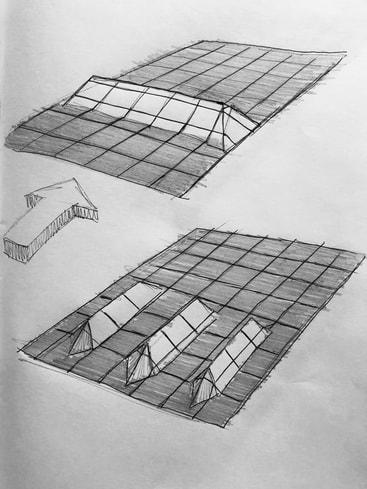 Grid Land Forms Grid Land Forms Ken Our last conversation, Lauren and I settled onto our restocking urban lots with Prairie grass/ plants while using a variable of land form to investigate turbulence and seed dispersal. We know we will have need of several lots for control and variable. The variable will investigate landscape form and the creation of wind turbulence and this effect on seed dispersal. While talking, Lauren mentioned the ability to get the seed into an up draft to attain more altitude and then possibly, more distance. This caused me to focus more on the landscape form that disrupts the laminar flow (steady, straight wind passage.) Quickly researching some forms from wind tunnels and nature, I came to see that two elements play an important role. One is the degree of the slope incline (steep or shallow) which is necessary to disrupt normal Laminar flow (think of wind crashing into a wall and tumbling over.) The second being the volatile speed of wind as it increases or decreases according to this encountered structure. A tightening of the opening through which wind flows will increase the speed of this portion of the wind, a broad passage slows it down. One interesting reference was the Hoover dam and its incredible updraft- as wind moves from downstream along a narrowing gorge it is then forced up the face of the dam. Using that as one sort of inspiration I begin sketching different forms that will affect the movement of wind. Some simple, others more complex. Some were designed to create a barrier tumble element, another to increase speed, the later sketches were a hybrid of those two elements. Some consideration needs to be given to the placement of the plants and their inherent needs- landscape level, exposure to sunlight, etc, as well as a general approximation of natural forms. Obviously, it is a beginning of turbulent form investigation but it is really interesting and has me very excited. Additionally, Lauren and I have decided that we want to see this project happen will use the remainder of our residency time to put together this project as a proposal and begin to look for funding and suitable venues. While our collaboration began with this residency, it is very exciting to think it will continue well beyond. This past week was more of a thinking process about our second potential idea. This idea being
an urban lot that was planted with careful arrangement of specie/ color to create a specific design. The subsequent study for Lauren would involve the migration of these plants into neighboring vicinity of the design. This migration would invariably lead to the erosion of the design and its eventual disappearance. This portion of slow erosion and disappearance would be the art. I find the concept of image entropy extremely interesting- having the process of erosion be the art. While art is often seen as an intentional organization of elements the slow slide to the opposite could be as well. There is a freedom in letting go of the control in a process and allowing a spotlight for nature and its workings. This happens all around every day- a constant erosion of our architecture, our roads, fallen trees, seaside cliffs, etc. While we normally combat this process in our communities it is part of the larger earth cycle. In this particular case, we would be employing prairie plants as our vehicle of erosion- a living community that would be reclaiming a man- made space and design. How this process unfolds is much like generation loss. Normally applied to digital files where a file is repeatedly saved/ compressed with inherent subtle variation each time degrading the file over many reproductions. Eventually, through these accumulated variations, the original image is degraded and unrecognizable. In our particular project, this erosion plays out through generations of offspring of plants that migrate from their starting position. These subtle variations in spatial location gradually cascade up to noticeable effect in the design until an equilibrium is found and a neutral point of entropy is achieved. (Entropy as I understand it is not solely a direction to disorder but a direction to utter neutrality or where eventually nothing happens.) Lauren has been coaching me in understanding how plant communities move- through corridors, pull invaders or push invaders, etc. This discrete arrangement would allow her a chance to do a long term study of these movements. I think the actual documentation of the project could assist in that capacity. As it would be beneficial to have overhead images (drone?) to document the dual processes of image erosion and the migration on a large scale. There could be a time lapse video of both these processes at work compressing what would normally be too long a period of time to perceive changes. Lauren This week Ken and I discussed various ways we could implement landscape elements that could alter wind dynamics, which in turn could alter the turbulence environment experienced by plant communities. When it comes to seed dispersal, turbulence is a key process to work with because it creates more opportunities for seeds to be lifted higher into the wind column, and thus dispersed longer distances. For some background on turbulence, you first have to think about laminar flow. Imagine you put a dye trace, or some sort of visible particle, into the wind so you could track the direction the wind was moving. If your dye trace was experiencing laminar flow (left side of diagram), then the particles would be moving in straightline winds. Here, seeds would simply move straight along until they fell out of the wind column. However, if the winds hit some sort of obstacle or element (at the green arrow below) that creates turbulent wind conditions, then the dye trace or seeds could get uplifted higher into the air. Since “time aloft” is a huge determinant of how far seeds disperse, the longer a seed can stay suspended in the wind column, the farther they can disperse. Thus laminar and turbulent wind conditions can have very different effects on seed dispersal. I like the idea of trying to work with directly modifying the landscape to alter the wind dynamics and see how a more turbulent environment alters the dispersal and establishment of plant species. To do this, you would need to have some prairie plots that have elements that create turbulent wind conditions, and some plots that do not have these elements in order to control for natural colonization processes. I could imagine these plots looking something like this: Finally, this weekend I volunteered at a local community pollinator garden and learned some
really interesting things about urban lots and gardening in St Louis. It turns out there are over 40,000 empty lots in St Louis, and many of them are owned by the city. There is a deal you can make with the city, where if you turn an empty lot into a garden, you can lease it for $1/year until someone wants to develop the land. I do not know all of the details and stipulations for creating these gardens, but it seems like we might actually be able to find multiple urban lots here in St Louis with which to create a really great sci/art project for a reasonable price! Blogged while listening to the Sharon Jones covering Gladys Knight. Lauren This last week was a really exciting one for me! I moved to St Louis to live with my husband after living apart for almost 2 years for work reasons. I am still a postdoc at the University of Minnesota, but I am going to be working remotely from Missouri. It was quite a change to move here, considering it was snowing in Minnesota right when we left, and when we got to St Louis and it was in the 70’s and beautiful and all the leaves were still changing colors and were on the trees still. So I get two falls! I am really excited about Ken’s interest in the grid that underlies the experiment. It’s totally new to me to think about how excited someone could be about the basic parts of a scientific experiment. The experimental grid that lays out plots is so fundamental to an experiment that most people do not even think about it as being important. I was really interested to hear about how Ken visualizes that part of the experiment as art, and how its design can add to the layers of our project (e.g.: the artistic layer of the grid, the artistic design of the plots above the grid, the layer of the wind and the moving art that goes along with the wind, etc). My goal for the next time we chat is to come up with several scalable scientific ideas to go with our narrowing vision of the plots with the grids, and then the wind turbulence. I have drawn a concept map for myself to think about the ideas. What is so cool about our collaboration, is that both Ken and I think the other’s part should be developed first in our project (we found this out this week). So Ken thinks I should come up with the scientific idea first because he can come up with tons of cool art concepts related to the idea, and I think he should come up with the cool art ideas first because I can come up with tons of science projects to address the art. We have been working on this cool back and forth where Ken throws out a crazy idea, I talk about the scientific limitations to a study related to his art, he comes up with an art concept around the importance of plots and the underlying grid (for example), and now I’m coming up with science ideas based on the grid. I have really enjoyed this collaboration because we challenge each other to come up with new ideas, and are flexible enough to take into consideration the limitations and interests of the other. Also, as a side note: we both blogged about Tron last week without knowing the other talked about it. We are so in-sync as a team that we even talk about the same topics without knowing it! Blogged while listening to the Budos Band. 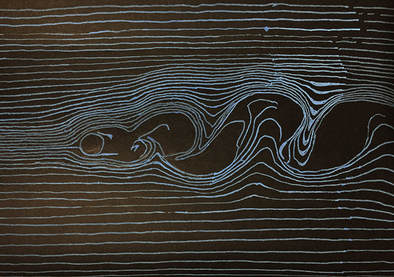 Ken Lauren and I have settled into our main idea of working with an urban lot to explore seed dispersal and prairie restoration. We are refining what specifically will be happening both science and art wise, but we seem to have narrowed down the choices. I chose one to focus on this week. This idea involves creating an earthwork which would affect wind movement through a space. By building mounds or ridges, the flow of wind would be altered- in effect creating turbulence from landscape structure. I took the last week to better familiarize myself with what is happening in turbulence and aerodynamics I learned that it is pretty similar what happens in liquids and gases. They both behave the same as they move by a stationary object (or if the object moves through the fluid or gas.) In each case, the flow is affected by what it comes in contact with. It is this interaction that has an effect on the pattern of the flow and reverberates later on. Laminar flow is straight and steady, the fluids move past each other smoothly. Turbulent flow is when the movement is disrupted and uneven. Effecting this flow is the Boundary Layer- the layer of fluid that is immediately touching the object (and no movement is happening) all the way until it touches where the fluid is at maximum velocity. If this area is unmixed and a nice gradation the result is a laminar flow. If there is an uneven gradation than a turbulent flow ensues. To understand how this might happen it is good to know about the Continuity Principle- the same amount of fluid that begins moving through or around an object must be the same amount you get at the end. This accounts for fluids speeding up when it enters a narrow space and slows down when it enters a wide space. Lastly, I learned that pressure varies according to speed- faster speed= lower pressure, slower speed= high pressure. Considering that landscape structure might include ridges or narrows, one can see how the flow would be uneven- speed and pressures would vary creating an uneven boundary layer and a turbulent flow. This disruption of flow often manifests itself in vortices or eddies- small circular movements in gas and liquid that cascade following contact with an object. Common examples are visible in streams as water moves around a small rock and a trail of eddies follows. I thought sketching these patterns might be helpful in understanding the physics of what is happening and also help visualize how this might affect a wind dispersing seed. Thinking back to this project, the earthwork would have this affect to some degree and possibly give Lauren an interesting variable to study yet also present an interesting land form to see in an urban context. Lauren I recently went to a science/art symposium in St Paul, Minnesota to see what folks in my city are up to related to science/art collaborations. It was really informative to listen to a group of science art teams talk about their project, what was successful, and what were places to look out for in the collaboration. What I really liked about these talks was that every group stressed the importance of getting to know each other. That getting to know people from different fields was massively important to broadening our view of the world – but that it all started with having a good relationship with your collaborator. I thought this was pretty neat since both Ken and I agreed that this was the way to go in the beginning as well. There was one science/art collaboration that really hit close to home, the Urban Flower Field. This collaboration was built in an empty lot in St Paul, Minnesota, so it has some of the foundation we are interested in. Here, a local artist teamed up with a local scientist, and built a park, where research plots made up a fractal shape, which is repeated on one of the walls of the park. Some of the interesting scientific advice I got from this talk, was the importance of having high replication because you could have unexpected increases in populations of herbivores (e.g. rabbits). This was super useful advice if you are working on a population-level experiment. At the Urban Flower Field, the scientific side of the park explores how different plants can be used for bioremediation. Ken and I discussed this project at length. We both really liked the approach they took to create a really neat urban park that brought together both art and science and created a space for local people to go. One thing we decided we wanted to try to do differently was to create science that at the same time was also art. So instead of artfully arranging scientific plots, we want our plots to also be art. The distinction is very minor, I realize. But I was really excited about Ken’s interest in trying to push the collaborative nature further. The point of making sure to have high enough replicates can be mediated if you look at a community-level project. So I think I am going to push for this! (By community-level project, I mean that we won’t focus specifically on one species, but we will instead look at how all species that co-inhabit the same plot interact). We agree that at this point we are likely going to stick with our urban, artistic prairie restoration idea. So now we are trying to decide where we go specifically. We have two main focuses, 1) the image erosion idea – where we examine how the specific prairie restoration design does or does not erode over time through natural dispersal and colonization, or 2) the earthworks idea where we manipulate the topography of the land to see how this alters turbulence, which could in turn alter the dispersal and colonization of species within the plots. One cool difference I see between these two ideas is that in 1) we do not manipulate the wind, we just measure it. Whereas in 2) we actually manipulate the wind environment which has the potential to affect wind turbulence which can impact the distance dispersed by seeds. We will see in future weeks where we go with these ideas! Blogged while listening to Tron music. Ken This past week I have been thinking more about the specifics that Lauren would need to complete an experiment. After reading last week about all that is accounted for in an experiment, there needs to be clear outlines and plots for Lauren to conduct research. Lauren drew me several examples of how she would look for dispersal while using various plot arrangements with border space in between, etc. The point being, the experiment/ research needs certain physical parameters to be controlled and allowed to play out. This brought me a bit away from the concept of multiple city lots connected by an over arcing design and pushed me to consider this framework. That concept of a plot and a logistics of space has me thinking about grids. A grid provides a measure for space and the ability to place coordinates, have clear neutral areas, clear target areas, etc. Maybe a brightly colored large grid design (5 foot squares?) laid over the landscape would afford Lauren the possibility of the required plots, controls, comparatives, and neutral space to undertake the experiment while also being art. This is important, art and science are equally embedded in each other rather than decoration by proximity. 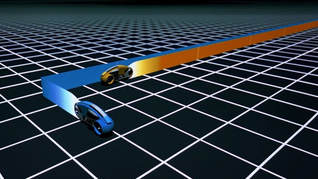 At the same time, it does touch on an interest of mine- wireframe landscapes. Likely inspired by watching the movie Tron as a child- particularly taken with the digital environment that was constructed (especially the light cycle race!). In addition to being used in the design of virtual worlds wireframe landscapes are used to better understand data about topography and its variations of altitude. I am intrigued by this concept of taking a 2-dimensional arrangement, such as a grid, and laying it across a 3-dimensional element. The distortion of this pattern of squares and parallel lines is what describes form, gives it contour. This is a basic tenet of drawing and depicting form. Possibly in this case, the grid on the landscape could blur the virtual world and the real world while reinforcing a methodology for the experiment and providing a sense of tactility for the investigation into turbulence topography. I think it is interesting taking something that is familiar as computer screen size and scaling it up to larger than life size. The grid re-emphasizes study on one hand yet is also a place holder between that which is being built up in creation or broken down to be understood. Visually and experientially, it would be graphic and impactful yet functional. 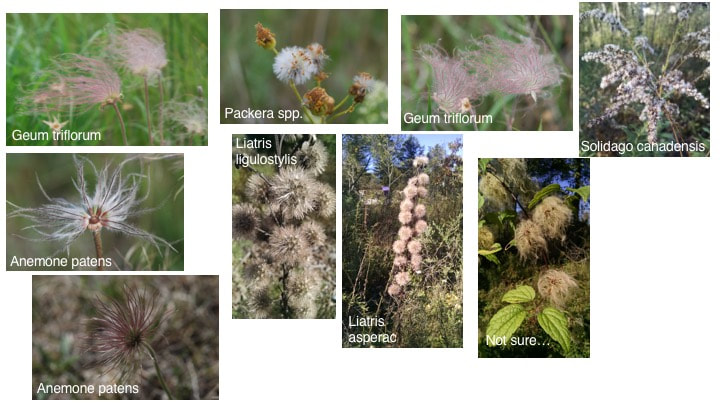 Lauren This week, instead of drawing plants right away, I decided to make what Ken calls a “mood board”. For those new to art lingo, a mood board is where artists put together a bunch of images they like without trying to classify them immediately (I admit I had to at least add the species names). You just put together images that you like and see what it brings out in your imagination. So I decided to put together a mood board of all the cool wind dispersed prairie species I could think of. Species I’ve seen in the past, and ones I really liked from my trip to the botanical gardens last week. It is pretty neat to see what the pictures made me think of. I really like the diverse set of shapes that wind dispersed inflourescences (the whole set of seeding heads on a plant) can take. And also there are so many wavy seed plumes that remind me a lot of the wind patterns Ken likes and that we are thinking a lot about for our project. Then after I made the seed board, while looking through my other images, I realized - you know what else is cool that doesn’t get enough cred? Stamens. So I then made another stamen mood board. Plants are pretty awesome and beautiful when you get past the petal part. I’m not sure what this will inspire, but it’s been really fun to think about seeds and other underappreciated aspects of plants. I’m going to chat with Ken about these and see what we can brainstorm! Blogged while listening to some Saun & Starr Sunshine. Ken
We both thought it was a good idea to familiarize ourselves with the practice and methods of each other. This week Lauren gave me some homework. She shared a paper with me entitled Plant spatial arrangement affects projected invasion speeds of two invasive thistles by Katherine M. Marchetto, Eelke Jongejans, Katriona Shea and Scott A. Isard. (I think she took it easy on me with a shorter paper!) Beyond the content being interesting and related to our project (densities of surrounding specimens affecting dispersal), what stood out to me was the thoroughly detailed approach to the research, down to the accounting of all choices made in setting up the experiment, specifics of site choice, averaging variables, concerns for containment, and the conclusions and possible applications for this information. Being aware of this helps me understand some issues that may arise as we push our project forward. Obviously this pertains to the unexpected opportunities/ challenges of making work that is a living system. Often in artmaking there is attention to object making (and certainly archival issues) content, historical references/ lineages, audience engagement, etc. To work with ecology and truly understand the interconnected quality of its existence is to acknowledge its sprawling, expansive, and blurred borders of concept and object. All these things are good. Seeing this as an artist medium brings it into the familiar realm of learning its chemistry, is predilections, its limitations, its responsiveness. I think this brings a unique understanding, or at least the beginnings of understanding, of engaging with a natural system. These thoughts were in the back of my mind as we talked with Kate earlier for our check in. During the conversation we talked about our project with urban lots as land art with scientific opportunities and its unique challenges. Some of these challenges come in the form of stewardship (as the project would last a few years at minimum) maintenance, city collaboration, long term funding, etc. Lauren very astutely pointed out that students, both science and art, and community members could be brought in to help maintain the project. The project would have a layer of relational aesthetics – The artwork creates a social environment in which people come together to participate in a shared activity. Bourriaud claims "the role of artworks is no longer to form imaginary and utopian realities, but to actually be ways of living and models of action within the existing real, whatever scale chosen by the artist." Wikipedia In this case people of different disciplines would interact as they work to maintain and research the site. Both of us believe in the benefits of early introduction to cross disciplinary study (especially science and art) brings about innovative ways of thinking. The art would not have solely defined physical borders, plant species migration or animations but would extend into the interactions/ experience of the people working the site, city officials, city regulations, and future management of the site. Maybe this sprawling interconnection is the true heart of the project. Lauren In our latest discussion Ken and I talked a lot about trying to find a way to make our prairie a meditative place. Ken’s thoughts on depicting the wind environment really peaked my interest and has got me thinking about how this could be used to alter the dispersal conditions for various plants and how this might affect community dynamics. Early on, Ken showed me this map, and I like thinking about this on a smaller scale. There are a few experiments that look at how the physical density of the plants in a community can alter the movement of species within that community. One I really like is by Katherine Marchetto et al. (see Oikos paper in 2010). In this study, Katherine and her colleagues altered the density of invasive thistle plants and the surrounding vegetation heights – and showed that the physical structure of the surrounding vegetation can alter how far the invasive species can move. I am really interested in potentially exploring this further with Ken. 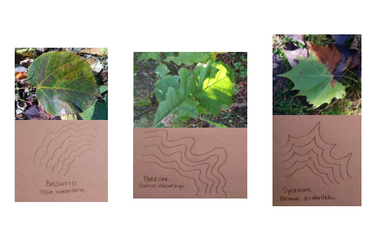 My goal for the next time I talk to Ken is to spend some time drawing plants, I’m hoping it might give me some breakthroughs. Also, it will give me a chance to explore the more creative side of plants. Today, I went to the Matthaei Botanical Garden to get some inspiration, and really enjoyed the leaves that were changing color. These leaves inspired me when thinking about the landscapes that Ken discussed last time. He talked about how he is interested in different curved landscapes, and patterns within the landscapes, so I thought it might be neat to create the shapes of the landscapes from the shapes of native tree leaves. Instead of simple circles or waves, the designs could be a bit more complex and based on nature. Blogged while listening to some binaural beats. (I’m feeling the brainwaves today) 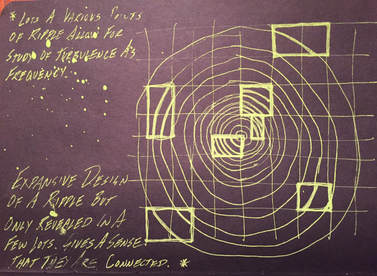 Ken After our last talk about wind and agents that affect dispersal I began sketching and brainstorming. A few things seemed to be swirling in my head- mostly the images I uploaded last week about ancient cultures moving earth to affect ecology/ agriculture/ or even creating a spiritual space. Images of the Nazca lines and the Llanos de Mojos sites seemed to be exerting influence. I also began thinking about this fossil I have (in my daily line of sight) of an ancient sea floor- with a dual ripple pattern. From these I began thinking about frequency and sketching a ripple pattern of concentric circles (think a drop echoing across a pond) forms to create in the land. Going back to turbulence topography, the idea of what/ how the landform affects the wind and the migration pattern of plants. I thought it might be interesting to see how this might be affected in a human made landscape (that still incorporates organic forms.) As I drew the concentric circles I was unsure how to fit them into a city lot. But then it dawned on me that there could be potential to have several city lots in various location but still within proximity. The lots could have a portion of the concentric circle pattern indicating a connection to the larger design. Viewed from above, the complete pattern would be implied through closure (gestalt theory) and reference a pulse within/ through the neighborhood. Also a clear reference to a remanent of a design, like a lost ruin or structure beneath the city. I thought this might afford Lauren lots with different frequencies of the ripple (more or less drastic topographical change) I also thought it might provide a unique earthwork for the urban space. Lauren and I have been continually returning to an interest in a work that is multi layered, science explorations and art and with another layer being a meditative or contemplative experience for the viewer. One common aspect of both disciplines is an intensity or stress due to uncertainties in the field. Lauren has mentioned how young scientists are faced with pressures for job and publishing immediately and that people in general in this time period could benefit from a meditative moment to engage with. We both think this is important and should have a place in our project. A project that might take place in a community in an urban setting could provide this through a focus on nature, careful plant selection, and the apparent soft ripple form moving in the ground and even digital monitoring of the wind.
This idea still resides in the urban science and art project category we are working on. But it was a good exercise to push it further, add complexity, see connections and references. |


